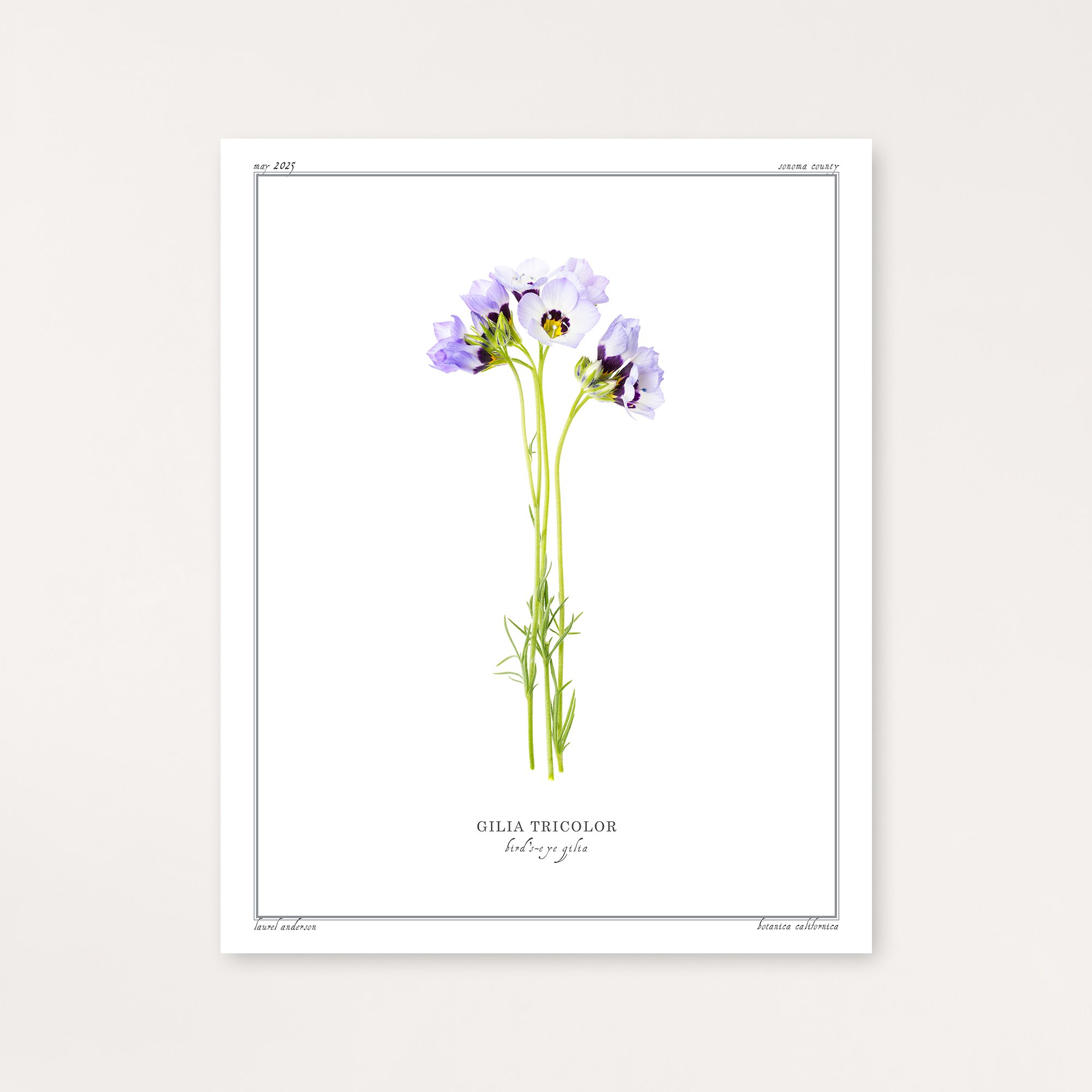 Image 1 of 2
Image 1 of 2

 Image 2 of 2
Image 2 of 2



Narrowleaf Mule Ears
Narrow-leaf Mule's Ears, Wyethia angustifolia, grows throughout central and northern California from the coast to the Sierras.
This important pollinator plant attracts bees, butterflies, and other beneficial insects with its abundant nectar and serves as a larval host for native butterflies and moths. The plant's extensive taproot system allows it to survive drought conditions while providing crucial habitat structure in grassland ecosystems. Birds, particularly goldfinches, feast on the abundant seeds produced after flowering.
Indigenous peoples of California traditionally utilized both the flower stalks and seeds as important food sources. The flower stalks were considered a delicacy when harvested before blooming, while the nutritious seeds were gathered and ground into pinole, a protein-rich meal that provided essential sustenance.
Each print is made by the artist using archival quality pigment ink on Moab's Entrada Rag Bright 300 paper.
Narrow-leaf Mule's Ears, Wyethia angustifolia, grows throughout central and northern California from the coast to the Sierras.
This important pollinator plant attracts bees, butterflies, and other beneficial insects with its abundant nectar and serves as a larval host for native butterflies and moths. The plant's extensive taproot system allows it to survive drought conditions while providing crucial habitat structure in grassland ecosystems. Birds, particularly goldfinches, feast on the abundant seeds produced after flowering.
Indigenous peoples of California traditionally utilized both the flower stalks and seeds as important food sources. The flower stalks were considered a delicacy when harvested before blooming, while the nutritious seeds were gathered and ground into pinole, a protein-rich meal that provided essential sustenance.
Each print is made by the artist using archival quality pigment ink on Moab's Entrada Rag Bright 300 paper.



















